The One World Tartarians
The Greatest Civilization
Ever to Be Erased From History
James W. Lee
Chapter 14
From Russia With Love
From “History Science of Fiction”
THE EPOCH OF THE XIII CENTURY
At the end of the XVIII century a major war
began between the Romanov Russia and
Siberian Moskovia. At first Ottoman Turkey
marched out as an ally of Tobolsk. The Romanovs
found themselves in a difficult position: they had to
fight on two fronts at once. However, on the 10 July
1774 after a series of defeats Turkey signed the peace
Treaty of Küçük Kaynarca with the Romanovs which
marked their defeat. Essentially it betrayed its ally –
the Czar of Tobolsk. Seizing this opportunity in 1774
the Romanovs urgently mobilised their troops from
the Turkish front to the Eastern Front. A.V.Suvorov,
who had recently distinguished himself in the battles
with the Turks, stood at the head of these troops. With
Suvorov’s help, count P.I.Panin, the commander-in chief of the Eastern Front, defeated the Siberian army
of ‘Pugachev’. Suvorov personally convoyed the
captured ‘Pugachev’ from Yaik to Simbirsk. He was later brought to Moscow and executed there,
after purporting that he was a common Cossack who had rebelled against the rightful rulers – the
Romanovs. Most likely, it was in fact some common Cossack who was brought for the execution,
but not the real Siberian war chief. It is possible that he was called ‘Pugachev’. The true identity
of the Siberian leader was probably kept secret by the Romanovs. The two SECRET PANELS
which were set up in Kazan and Orenburg in 1773-1774, were in charge of the misrepresentation
of the Pugachev war history [988:00], the article ‘Pugachevshina’.
Most likely that following their defeat the remnants of the royal court at Tobolsk and its
faithful troops fled to China, where they were warmly received by the Emperors of Manchuria,
the distant relatives of the Hordian czars of Tobolsk, see our book ‘Pegaya Orda’. The Romanovs
occupied Siberia, having at first annexed it to the province of Kazan and pretended that ‘it had
been always been this way’. But soon they began to divide it ‘after suddenly realizing that it was
too big’. Many old Siberian cities were wiped off the face of the earth. The majority of the names
present on the maps of Siberia in the XVIII century are not there in the XIX century anymore.
When the archaeologists unearthed the remnants of the Siberian cities destroyed in the XVIII
century, instead of reconstructing the true history of Siberia, they declared their findings to be
extremely ancient. The perfect example of this is Arkaim in the Urals.
In 1775 for the victory over Moscow Tartary Suvorov was presented with the most luxurious
and expensive award among those he had received – a diamond encrusted sword. Much to
everyone’s delight, it was not held a secret at that point. The Romanovs happily celebrated their
victory over their severe Siberian neighbor. The victory came to the Romanovs at a price and
they spared neither expense nor rewards for their victorious generals-victors.
Later however, the time came when they had to give an account of the history of the war on
paper, to canonize the version for the posterity. And here they faced a difficulty. As the Romanovs
were persistently hiding the very existence of their Siberian neighbour, depicting that Siberia had
always belonged to them. That is why a decision was made to present the war with Tobolsk as
an allegedly comparatively easy fight of government troops with a rebellious mob. Purporting,
that the rebels’ ringleader was a common Cossack Yemelyan Pugachev. When presented in such a
light, Suvorov’s achievements in defeating ‘Pugachev’ were an obstacle. It was clear, that a great
military commander should not be fighting a crowd of ignorant peasants. He had much greater
tasks, and the suppression of peasant revolts was a responsibility of the second-rate military
commanders. That is why they presented the matter the following way.
Allegedly ‘Pugachev’ was defeated by an unknown lieutenant-colonel Michelsohn, who was
made promoted to colonel for his achievement. Suvorov, they said, had nothing to do with it.
He was called to the Eastern front by mistake, due to P.I.Panin’s panic. Suvorov, they said, had
absolutely nothing to do there. So in the end he did not fight against Pugachev.
The Romanovs Endeavoured To Bring Moscow Down
During the epoch of Peter I the relations between Romanov Russia and the vast Moscow
Tartary became especially tense. Fearing the restoration of the Horde’s regime in Central Russia,
the Romanovs transferred their capital to distant Petersburg, which was especially built by
Peter I for this purpose. The former capital – Moscow, which was still associated in the minds
of many people with Horde of the XIV-XVI cc., was assigned the role of a second-rate city [4v].
Peter I and his circle didn’t like Moscow and everything connected with it. Here is an interesting
detail conveyed by the French courtier Leboise. He accompanied Peter’s court in Paris 1717. In
his report to the French King, Leboise wrote: ‘The word ‘Muscovite’ and even ‘Muscovia’ are
deeply insulting for this entire court’ [514], v.2, p.283. It is clear, that a heavy political gloom was
to descend onto Moscow and Moscow Kremlin. This is the exact picture that emerges from the
documents of the XVIII [TsRS], ch.9.
The Romanovs not only abandoned the old Russian-Horde Kremlin of Moscow=Jerusalem,
but decided to mock deride it as ‘Mongol’ relics. For example, they sent their jesters with their
‘weddings’ into the Palace of the Facets (Granovitaya Palata). Let them have fun, they said. Let us
see how exactly the Romanov’s buffoons and their friends danced, drank and joked in the heart of
the former capital of Russia-Horde = Biblical Israel. The old documents, which came to light after
a long period of obscurity thanks to the efforts of Zabelin, inform us: ‘THE PREFECT OF THE
LATIN SCHOOLS AND THE PHILOSOPHY TEACHER HIEROMONK JOSEPH ARRANGED
ORGANISED PLAY ACTING. IT IS POSSIBLE THAT DURING THE ARRANGEMENT OF THESE
COMEDIES THERE THE FRESCOS OF THE PALACE CHAMBERS, WHICH WERE ALREADY
QUITE DILAPIDATED, WERE LIME WASHED’ [282:1], part 1, p.117-118.
Everything is clear. The West European ‘scholars’ who had swarmed across Romanov Russia
(especially after Peter cut a window through into enlightened Europe, which was impressed on all of us multiple times) not only clowned around in the Russian Horde cathedrals, but also were
destroying the vulnerable Hordian relics of antiquity, reveling in impunity. In particular they lime
washed the old frescos in Kremlin. Later, post factum, they declared them to be extremely dilapidated.
Purporting that there was nothing left to do but to lime wash them. It became clean and beautiful
there. The old Russian pictures ceased to annoy the delicate Latin taste. It is astonishing that the
Romanovs abused the Moscow Kremlin up until the beginning of the XIX c inclusively. Hence one
can see how great was their irritation with the former Hordian traditions and memories connected
with Moscow and its Kremlin. It came to a point where in the beginning of the XIX century the
Romanov administration practically exposed Kremlin to thieves and cheats! IN KREMLIN THERE
APPEARED ‘NESTS OF THIEVES’ AND ‘HOUSES OF DEBAUCHERY’ [TsRS], ch.9.
Modern day revisionist history: Communism was a curse invented by the Jesuits via their
“Reduction” settlements in South America. They chose as their puppet German Jew Karl Marx
while under their care in Trier. They used it to wage war against their hated enemies, the Romanovs, who had evicted the Jesuits in 1820. A Jesuit priest by the name of Iosif Vissarionovich
Dzhugashvili was chosen from Georgia to turn Russia into a totalitarian nightmare. He would
later change his name to Joseph Stalin.
They have carefully played both Russians and Americans against each other ever since, cashing
in (literally) on the resulting bloodshed. They used their infiltrators and subversives in America
to counter the Nazi-given technological advances with self-destructive leadership and policy
decisions (e.g. Kennedy threatened resolution to Vietnam and was eliminated).
The Soviet Union collapsed, but rather than allow a new climate of peace and co-operation to
ensue, tremendous discord has been instilled. Organs like the European Union and the North
Atlantic Treaty Organization have been used to increase the “Strategy of Containment” dreamed
up by Papal agents like Zbigniew Brzezinski—thought by Russian
Intelligence to have been behind the election of Polish Cardinal
Karol Józef Wojtyła to the Papacy to become “Pope John Paul II”.
A literal Crusade continues to target Orthodox Russia on her
very doorstep utilizing a CIA/Nazi/Catholic influence in Slavic
Ukraine, the birthplace of both nations. The Orthodox Church is
heavily infiltrated with Jesuits and it is the Left Leg of the terrible
statue the Prophet Daniel saw in Nebuchadnezzar’s dream, with
Rome being the Right Leg. It is almost as hampered by humanistic
and pagan religious traditions as Rome is. But through it, a mighty
thing has happened; the good Russian people are living their Christian values and this does not sit well with the Luciferian Elite that
runs and rules the West (through the Vatican).
Robert K. Massie, in his award-winning book Nicholas and Alexandra, described the St. Petersburg of the turn of the century: “It was the center of all that was advanced, all that was smart and
much that was cynical in Russian life. Its great opera and ballet companies, its symphonies and
chamber orchestras played the music of Glinka, Rimsky-Korsakov, Borodin, Mussorgsky, and
Tschaikovsky; its citizens read Pushkin, Gogol, Dostoyevsky, Turgenev, and Tolstoy. But society
spoke French, not Russian, and the best clothing and furniture were ordered from Paris…The
‘season’ in St. Petersburg began on New Year’s Day and lasted until the beginning of Lent.”
The White Cities of Russia
And the story goes..
The Seven Sisters aka ‘The Stalin’s High-Rises’, are a group of seven skyscrapers in Moscow
designed in the Stalinist style. They were built from 1947 to 1953! in an elaborate combination
of Russian Baroque and Gothic styles. These towers are inspired by the Municipal Building in
Manhattan. At the time of construction they were the tallest buildings in Europe, and the main
building of Moscow State University remained the tallest building in Europe until 1997.
The Republic of Tartasan, Russia’s Most Ancient City
The nation of Bulgaria has a
lesser known cousin hidden in
the hinterlands of the autonomous Republic of Tatarstan:
Bolgar. Although it may be less
famous, Bolgar has no less an
illustrious history, it’s one of the
most ancient cities in Russia.
Long before the Mongols, the
Eurasian steppe was dominated
by another great Turkic empire,
the Proto-Bulgars, whose state
was centered around the Sea of
Azov (modern Russia and Ukraine). Known to be equally as skilled in nation building as in
warfare, they built massive stone citadels wherever they set foot. Under the legendary Khan
Kubrat, the Proto-Bulgar empire came to cover much of the Black Sea Coast. After Kubrat’s death,
however, his five sons decided to part ways, each going in a different direction to run their own
state. The two most successful were Asparuh, who founded the Bulgaria we know today, and
Kotrag, who wandered northwards along the Volga.
Renaissance on the Volga;
Eventually, Kotrag’s Bulgars settled down on a pleasant piece of
real estate along the Volga River and established the great city of Bolgar, a true Eurasian metropolis.
After a few campaigns against their neighbors, the Volga Bulgarians, as they came to be called,
established a vast empire in the heart of Russia. In 922, the ruler Aydai Khan converted to Islam
and invested in the construction of madrassas and mosques. Meanwhile, his state became a major
middleman along Silk Road trade routes. Tombstones attest to a large Jewish and Armenian
district, and travelers like ibn-Fadlan hailed to the Khan’s emphasis on education. Bolgar had
become the center of Islamic civilization in Eastern Europe.
Fast forward Mongols, and Russians, Bolgar still remains an important site within Russia.
Sitting on a calm bend of the Volga River, the remains of the city include stone citadels, mosques,
and tombs that attest to a strong state skilled in masonry.
These remains of Volga Bulgaria are viewed as the origin of all Muslims living along the
Volga today, particularly the Tartars and Bashkirs. Once a year, they visit Bolgar in a religious
pilgrimage known as the “Little Hajj.” To this day, many Tartars consider themselves to be first
and foremost Bulgars.
National significance; Bolgar is not just a regional monument. It’s an official UNESCO World
Heritage Site acknowledged as an integral part of the history of the entire Russian nation. In
fact, Bolgar was the first protected heritage site in all of Russia. In July 1722, Peter the Great
personally ordered the governor of Tatarstan to renovate the site. There was the Winter Palace,
the Kremlin or Novgorod there was Bolgar, the home to a mysterious civilization that once
dominated Eastern Europe.
White City Moscow is known as a city of white stone , thanks to its early Kremlin walls
constructed from local limestone. But for the rest of its history, Russia’s predominantly wooden
capital was shaped by fire, suffering dozens of large blazes: the “Great Fire” of 1547 that killed
several thousand people; one set by the invading Crimean Tatars in 1571 that killed tens of thousands; and a 1737 fire that severely damaged the Kremlin.
Moscow’s last great fire swept through the city during the occupation of the city by Napoleon’s Grande Armée in September 1812. The conflagration destroyed three-fourths of the city’s
buildings, according to some estimates, and killed thousands of residents and wounded soldiers.
The fire had a lasting effect on the city’s appearance, as city planners later rebuilt whole neighborhoods, creating new squares and limiting wooden construction.
When the French entered Moscow, they found a city suddenly drained of life, “resembling a desert,”
de Caulaincourt remembered. “In the Kremlin, just like in most private mansions, everything
was in its place: Clocks were even still ticking, as if their owners were still home,” he wrote.
The fire quickly spread from the outskirts of the city to the center, reaching houses close to
the Kremlin by the following morning. The wind, which had turned a bit to the west, carried
huge embers more than 200 meters through the air to fall “like a fiery rain” and set new houses
ablaze, de Caulaincourt recalled. The air glowed with heat. Observing the cataclysm, Napoleon
reportedly exclaimed, “What a terrible sight! They’re burning it themselves… What resolution!
What people! These are Scythians!” “The burning city reminded me of the fires that destroyed
parts of Constantinople and Smyrna before my eyes, but this time, the sight was more striking:
It was the most appalling sight I have ever seen,” Dedem wrote.
Chapter 15
The Great Tartary
Railway Train Systems
So the Story Goes…
The very first trains were built in 1827 and from 1880 to 1890 more than 70,300 miles of new
lines were opened in that decade alone!
The first steam powered railroad trains began in 1804. Cross country travel by train was
not completed in the US until 1869. As you can read below, Sacramento, California had already
built their first railway lines in 1855. This means that the trains used in Sacramento had to be
put on ships, sailed around the bottom of South America up to San Francisco, CA and then sent
up the Sacramento River to be put on the rail lines. Men and women who came by the tens of
thousands for the California Gold Rush, after gold was found in Sutters Mill, above Sacramento,
would of have to been used to dig the rail lines, forge the metal, lay the tracks and install the
trains atop the tracks with all the knowledge, and surveying needed to complete the rail lines.
How Railways Were Constructed Back Then
..so the story goes…
Before the transcontinental railroad was completed, travel overland by stagecoach cost $1,000,
took five or six months, and involved crossing rugged mountains and arid desert. The alternatives
were to travel by sea around the tip of South America, a distance of 18,000 miles; or to cross the Isthmus of Panama, then travel north by ship to California. Each route took months and was
dangerous and expensive. The transcontinental railroad would make it possible to complete the
trip in five days at a cost of $150 for a first-class sleeper.
The transcontinental railroad was built in six years almost entirely by hand. Surveyors had
to decide the best route to cross the mountains. Workers drove spikes into mountains, filled the
holes with black powder, and blasted through the rock inch by inch. Handcarts moved the drift
from cuts to fills. Bridges, including one 700 feet long and 126 feet in the air, had to be constructed
to ford streams. Timber had to be felled and cleared, gravel had to be pulled from quarries and
crushed while boats had to forge rivers to lay the pylon footings for the bridges.
The California Gold Rush of 1849
The first CPRR locomotive crossed the California - Nevada border on December 13, 1867. This
allegedly allowed tens of thousands to come to California by train seeking gold.
This from Railwest.com.
“The discovery of gold in California
near Sutter’s Mill in Coloma, east of
Sacramento, on January 24, 1848
brought a huge number of people lured
by the promise of “gold laying in the
streams” into California during 1849.
An estimated 55,000 arrived by overland routes and another 25,000 by sea”.
And the story goes on to say there
was a worldwide exodus to California as well (Wikipedia):
“There were tens of thousands each of Mexicans, Chinese, Britons, Australians, French, and
Latin Americans, together with many smaller groups of miners, such as African Americans, Filipinos, Basques and Turks. People from small villages in the hills near Genova, Italy were among
the first to settle permanently in the Sierra Nevada foothills; they brought with them traditional
agricultural skills, developed to survive cold winters. A modest number of miners of African
ancestry (probably less than 4,000) had come from the Southern States, the Caribbean and Brazil.
A number of immigrants were from China. Several hundred Chinese arrived in California in 1849
and 1850, and in 1852 more than 20,000 landed in San Francisco.”
Now here is where the stories don’t add up. Remember as stated above, that the first time the
railway crossed the Sierra Nevada mountain range was from 1863-1869….yet, we are told/sold
that the Gold Rush ENDED in 1855 due to “economic hardships”! From Wikipedia:
“By 1855, the economic climate had changed dramatically. Gold could be retrieved profitably
from the goldfields only by medium to large groups of workers, either in partnerships or as
employees. By the mid-1850s, it was the owners of these gold-mining companies who made the
money. Also, the population and economy of California had become large and diverse enough
that money could be made in a wide variety of conventional businesses”.
We are also told that there was a
railway built in 1855 that crossed
what became the Panama Canal:
“The Gold Rush propelled California from a sleepy, little-known
backwater to a center of the global
imagination and the destination of
hundreds of thousands of people.
The new immigrants often showed
remarkable inventiveness and
civic-mindedness. For example, in
the midst of the Gold Rush, towns
and cities were chartered, a state
constitutional convention was convened, a state constitution written, elections held, and representatives sent to Washington, D.C. to negotiate the admission of California as a state.
Large-scale agriculture (California’s second “Gold Rush”) began during this time. Roads,
schools, churches, and civic organizations quickly came into existence. The vast majority of the
immigrants were Americans. Pressure grew for better communications and political connections
to the rest of the United States, leading to statehood for California on September 9, 1850, in the
Compromise of 1850 as the 31st state of the United States.
Between 1847 and 1870, the population of
San Francisco increased from 500 to 150,000
whereby 1900, 300,000 people were living
in San Francisco alone. The Gold Rush
wealth and population increase led to significantly improved transportation between
California and the East Coast. The Panama
Railway, spanning the Isthmus of Panama,
was finished in 1855. Steamships, including
those owned by the Pacific Mail Steamship
Company, began regular service from San
Francisco to Panama, where passengers,
goods and mail would take the train across
the Isthmus and board steamships headed
to the East Coast.” Thousands of workers,
including Irish and German immigrants, former Union and Confederate soldiers, freed slaves,
and especially Chinese immigrants played a part in the construction. Chinese laborers first went
to work for the Central Pacific as it began crossing California’s Sierra Nevada Mountains in 1865.
At one point, 8,000 of the 10,000 men toiling for the Central Pacific were Chinese. At one-point, Chinese
workers were lowered in hand-woven reed baskets to drill blasting holes in the rock. They placed
explosives in each hole, lit the fuses, and were, hopefully, pulled up before the powder was detonated. Explosions, freezing temperatures, and avalanches in the High Sierras killed hundreds.
When Chinese workers struck for higher pay, a Central Pacific executive withheld their food supplies until they agreed to go back to work.
The story goes that hand labor, including 10,000
Chinese who sailed for weeks to San Francisco,
then found horses, or walked over a hundred
miles, or sailed up the Sacramento river, then
hoofed it up to the foothills of the Sierra Nevada’s to work on the transcontinental railroad.
And as you can see by the images, many train
tunnels had to be dug out and tracks laid to
cross the rugged mountains. The Central Pacific
Railroad relied on the muscle of men wielding hammers and chisels to make the holes into which
blasting powder was packed. An on-site blacksmith’s shop stayed
busy, employed in restoring the tips of rapidly blunted tools. At one
point during the winter of 1866-67, there were eight thousand men
working in three round-the-clock shifts, attacking the granite from
four faces, drilling inward from the ends and outward from the
center. When the black powder they used first was replaced with a
new explosive, nitroglycerin, the pace of excavation increased from
1.18 to 1.82 feet per day. The work force that chiseled through the
Sierra Nevada granite was composed mainly of Chinese immigrant
workers who had arrived in California during the 1850s seeking to
profit from the gold rush. The entire project over the Sierra Nevada
Mountains, over 70 miles of track, were completed in less than 5
years, it is said.
Just before Christmas Day 1879, a strong Gulf of Alaska-bred
storm surged into the Northern Sierra, bringing heavy snow. The
storm left snow 5 feet deep at Blue Canyon with nearly 10 feet at Donner Pass. By Jan. 1, 1890,
an impressive 22 feet of snow had fallen on Donner Pass, with 15 feet in December alone. In
Truckee, the snowpack measured just over seven feet.In early January, a dome of high pressure
poured cold air into the region. In Reno, the temperature plummeted to 19 below zero on Jan. 8,
still the all-time lowest reading there.
The months of December 1894 and
January 1895 dumped more than 50
inches of precipitation, meaning Donner
Summit was blasted with nearly a
whole winter’s worth of snow and
rain in just eight weeks. The rest of
the winter of 1895 was mellow, but
the storms of December and January
contributed so much snow that the
season total of 685 inches (57 feet) at
Norden was enough to rank the winter
as the fifth-snowiest of record. The 503 inches (42 feet) of snow that fell in those two months is just one-inch shy of the United States
record for a two-month period, measured in January and February 1925 at the Paradise Ranger
Station at Mt. Rainier, Washington.
The First Trains Worldwide
The very first steam powered trains began on February 21,
1804, the world’s first steam-powered railway journey took
place when Trevithick’s unnamed steam locomotive hauled
a train along the tramway of the Penydarren ironworks, near
Merthyr Tydfil in South Wales. The first full-scale working
railway steam locomotive was built in the United Kingdom
in 1804 by Richard Trevithick, a British engineer born in
Cornwall.
Asia
The country’s first passenger train, which ran between Bombay’s Bori Bunder station and
Thane on 16 April 1853, was dedicated by Lord Dalhousie. The 14-carriage train was hauled by
three steam locomotives: the Sahib, Sindh, and Sultan. Travelling 34 kilometres (21 mi), the train
carried 400 people.
Europe
Great Britain was “the pioneer of train travel.” The first public railway, the Stockton and
Darlington Railway, was constructed in Britain in 1825. It was not until 1830, however, that the
train “Rocket” of the Liverpool and Manchester Railway grabbed the world’s attention and led to
the start of the Railroad Era. Railroad Mania began in the 1840s, during which Parliament passed
272 acts, many of which led to the creation of new railroad companies. This Railway Mania led
Britain to reach a new peak of 9,000 kilometers of track in 1950 compared to 1,500 kilometers in
1939 and 90 kilometers in 1829. Railroads became
crucial to Britain’s economy. Trains transported iron
and coal supplies from North England to the factory-filled cities of the East and West and transported
many people from rural areas to cities, where they
took jobs in the plethora of factories. Germany’s
first railroad came in 1835 with the construction of
the six-kilometer Bayerische Ludwigsbahn, which
was located in Bavaria. Germans had visited Britain
prior to this and examined the British railway
industry and brought what they learned back to
Germany. British investors were also looking to
invest in the industrialized regions of Germany.
In fact, the locomotive and driver of Germany’s
first railroad were both British.
This is the Nyugati Railway Station in Budapest,
Hungary, that survived intact. It also served to the kings
and had a magnificent waiting room called “The Royal
Waiting Room”. The station was planned by August
de Serres and was built by the Eiffel Company. It was
opened on 28 October 1877. It replaced a previous
station, which was the terminus of Hungary’s first
railway line, the Pest–Vác line (constructed in 1846).
This building was pulled down in order to construct
the Grand Boulevard. Again, there is no mention of
how this magnificent building was constructed or the
architectural drawings made available to see.
Its entire structure is metallic since only the metal,
associated with mercury and other small technical
secrets under the domes, allows the formation of an
electromagnetic field. In front of it, trams would circulate wirelessly because they were “pulled”
through a connection in contact with the 3 metal rails - which transmits electromagnetics energy
to the metal parts under the train. As in other
cities worldwide. As in Seattle in 1940, one of the
last American cities to have streetcar powered by
atmospheric.
St Pancras railway station, also known as London
St Pancras and officially since 2007 as St Pancras
International, is a central London railway terminus
located on Euston Road in the London Borough
of Camden. It is the terminal station for Eurostar
continental services from London via High Speed 1
and the Channel Tunnel to Belgium, France and the
Netherlands. After rail traffic problems following the 1862 International Exhibition, the MR decided
to build a connection from Bedford to London with their own terminus. The station was designed
by William Henry Barlow and
constructed with a single span iron roof.
Following the
station’s opening on 1 October
1868, the MR constructed the
Midland Grand Hotel on the
station’s facade, which has been
widely praised for its architecture and is now a Grade I listed
building along with the rest of
the station.
USA
On February 28, 1827, the Baltimore & Ohio Railroad
became the first U.S. railway chartered for commercial
transport of passengers and freight. There were skeptics
who doubted that a steam engine could work along steep,
winding grades, but the Tom Thumb!, designed by Peter
Cooper, put an end to their doubts. The First Transcontinental Railroad (known originally as the “Pacific Railroad” and
later as the “Overland Route”) was a 1,912-mile (3,077 km)
continuous railroad line constructed between 1863 and
1869 that connected
the existing eastern
U.S. rail network at
Council Bluffs, Iowa
with the Pacific coast at the Oakland Long Wharf on San
Francisco Bay. The Sacramento Valley Railroad (SVRR) was
incorporated on August 4, 1852. Its first train operated on
February 22, 1856.
The first use of electrification on an American main line
was on a four-mile stretch of the Baltimore Belt Line of the
Baltimore and Ohio Railroad (B&O) in 1895 connecting the main portion of the B&O to the new
line to New York through a series of tunnels around the edges of Baltimore’s downtown. Parallel
tracks on the Pennsylvania Railroad had shown that coal smoke from steam locomotives would be
a major operating issue and a public nuisance. Three Bo+Bo units were initially used, at the south
end of the electrified section; they coupled onto the locomotive and train and pulled it through
the tunnels. When construction began on the B&O in the 1820s, railroad engineering was in its
infancy. Unsure exactly which materials would suffice, the B&O erred on the side of sturdiness
and built many of its early structures of granite. Even the track
bed to which iron strap rail was affixed consisted of the stone.
Though the granite soon proved too unforgiving and expensive
for track, most of the B&O’s monumental bridges have survived
to this day, and many are still in active railroad use by CSX. Baltimore’s Carrollton Viaduct, named in honor of Charles Carroll of
Carrollton, was the B&O’s first bridge, and is the world’s second oldest railroad bridge still carrying trains (the world’s oldest is
the Skerne Bridge, Darlington, UK of 1824-1825). The Thomas
Viaduct in Relay, Maryland, was the longest bridge in the United
States upon its completion in 1835. It also remains in use. The
B&O made extensive use of the Bollman iron truss bridge design
in the mid-19th century. Its durability and ease of assembly aided
faster railroad construction.
Note the Freemason garb on the laying of the first cornerstone
as well. What does that tell you?
Luxurious Traveling by Rail
Mail Order Everything in 1895. How Was This
Possible if Railways were just
forming?
Mail order catalogues shipping everything to anywhere in
USA in 1895 by rail. How did they get manufactures products, get payments, etc?… The story goes.. “Our mail order
methods meet many wants,” wrote a poetic but anonymous
copywriter on a page of the 1895 Montgomery Ward & Co.
catalogue. He had a gift for understatement. At its zenith from
the 1880s to the 1940s, Montgomery Ward, like its cross-town
Chicago rival, Sears, sold virtually everything the average
American could think of or
desire--and by mail. This was
a revolution, and Ward’s fired
the first shot. To buy spittoons, books of gospel hymns, hat pins,
rifles, wagons, violins, birdcages, or portable bathtubs, purchases
that used to require many separate trips to
specialist merchants, suddenly all the American shopper had to do was lick a stamp. This
unabridged facsimile of the retail giant’s 1895
catalogue showcases some 25,000 items, from
the necessities of life (flour, shirts) to products
whose time has passed (ear trumpets). It is an
important resource for antiquaries, students
of Americana, writers of historical fiction, and
anyone who wants to know how much his great-grandfather paid for his
suspenders. It is a true record of an era”.
Chapter 16
Tartar USA
Just Selecting the US State Capitol Buildings
West Virginia(Take note
of the difference in Virginia
below)
Virginia(That definitely says Rome
W.V. not so much dc)
Trenton
Boston
Albany
Number State City Construction
Completion Date
1 Virginia-Richmond 1790
2 New Jersey -Trenton 1792
3 Maryland -Annapolis 1797
4 Massachusetts -Boston 1798
5 New Hampshire- Concord 1818
6 Maine -Augusta 1832
7 Vermont -Montpelier 1836
8 Alabama- Montgomery 1851
9 Tennessee= Nashville 1854
10 Ohio -Columbus 1861
11 Kansas -Topeka 1873
12 California- Sacramento 1874
13 Michigan- Lansing 1878
14 Connecticut -Hartford 1879
15 Iowa Des -Moines 1886
16 Illinois -Springfield 1887
17 Indiana-Indianapolis 1888
18 Texas- Austin 1888
19 Georgia -Atlanta 1889
20 Wyoming -Cheyenne 1890
21 Montana- Helena 1902
22 Rhode Island-Providence 1904
23 Minnesota- St. Paul 1905
24 Pennsylvania- Harrisburg 1906
25 Colorado Denver 1907
26 Kentucky- Frankfort 1910
27 South Carolina- Pierre 1911 ???(S.Dakota dc)
28 Idaho Boise -1913
29 Arkansas Little Rock 1915
30 Utah Salt Lake City 1916
31 Missouri Jefferson City 1917
32 Oklahoma Oklahoma City 1917
33 Wisconsin Madison 1917
34 Washington Olympia 1928
35 West Virginia Charleston 1932
Baton Rouge La,(1880-1897)
Hartford
And how impressive is it that Americans managed to construct all those classical buildings in
just 147 years? Did they use the same architects all across the country?
Painted in 1865 by Constantino Brumidi, the
Apotheosis of Washington in the eye of the U.S.
Capitol Building’s Rotunda depicts Freemason
George Washington rising to the heavens in
glory, flanked by female figures representing
Liberty and Victory/Fame and surrounded by
six groups of figures. The fresco is suspended
180 feet above the Rotunda floor and covers an
area of 4,664 square feet. The word “apotheosis” in the title means literally the raising of a
person to the rank of a god, or the glorification
of a person as an ideal. Note the tombstone
of George Washington states Freemason first above 1st President of the
United States. It shows us what the priorities were of those who buried the 1st US President. Most
US Presidents are Freemasons or Knights of Malta members.
US Public Court Houses
Sonoma County Ca.
Livingston County Mich.
Cook County Ill.
Detroit
US Post Office’s… Just to Deliver Mail ???
So the story goes…and lasted just 1 ½ years.
By the 1850s, the population began to flow into the
newly acquired Louisiana,
Oregon and California territories. Wagon trains transported
some of the mail, but were
often targets of ambushes
and other tragedies. After
the 1848 gold rush, the Post
Office Department awarded
a contract to the Pacific Mail
Steamship Company to
transport mail to California.
During this time some mail
was carried by the military
between Fort Leavenworth
and Santa Fe.
Cincinnati 1900 Post Office
Omaha P.O./courthouse
Pittsburgh P.O.
The Overland Mail Company stage line of John Butterfield was also awarded a contract. The
stages used the 2,800-mile southern route between Tipton, Missouri and San Francisco, California, specified as a 24-day run but often taking months. Californians felt their isolation from
lack of regular mail so a better idea was needed. The fastest piece of mail in the history of the
Pony Express was President Abraham Lincoln’s inaugural address. It was carried to California in
7 days and 17 hours. Although the Pony Express existed for only one and a half years it proved
that the Central Route to California was usable year-round. On October 24, 1861, the transcontinental telegraph line was completed and the Pony Express, suffering from financial difficulties,
was sold to Wells Fargo, and became a legend.
The first airmail was transported in 1870 by letters in free balloons. It is difficult to think of
balloons as a form of transportation, however, on September 23, 1870, more than 500 pounds of
mail was sent aloft. It is unknown to date if this mail has reached its destination. In 1911, demonstrations of airplane mail service were made in India, England and the United States.Although
the Wright Brothers successfully flew in 1903, for only 12 minutes, it wasn’t until near the end
of World War I that planes with motors were used.
*****
We are told/sold that all of these very similar massive structures were created within a couple
of decades in the late 1800’s to deliver and send mail, when they could only be delivered by
stagecoach and horse and buggy. And the populations at the time in the cities, according to official US Census does not justify the immensity of the buildings?
Horse and Buggy Days Construction in NYC 1880
Madison Sq. Garden
Oriental Hotel Manhattan Beach
Grand Central Station 1871
Original Waldorf Astoria
American Museum of
Natural History
Morris High School
Bronx N.Y.1874
CHURCH OF THE DISCIPLES NY 1875
Union League Clubhouse
Staatszeitung Building
Metropolitan Hotel
Destruction of Tartary Buildings Across the USA Inc.
See pages 227- 230 on the scroll at the link below
Freemasonic Structures
Indianapolis
Detroit
Detroit
The Indianapolis Freemason Building built
between 1927 and 1929 it is one of the most
impressive structures of its type in the Midwest.
Designed by local architectural firm Asmus and
Clark, the Grand Lodge of Tennessee was built
in 1925, a time when most architects designing
monumental buildings turned to the Neoclassical
style, also known as Classical Revival.
The Detroit Masonic Temple is the world’s
largest Masonic Temple at 500 Temple Street.
It was designed in the neo-gothic architectural
style, using a great deal of limestone.
next
Grand Exhibitions & Amazing
Amusement Parks
I did not include all the pictures in this one, the reader can go to page 203 on the scroll at this link, this post continues until page 230 on the scroll for the images I left out, most of them in chapters 15 and 16



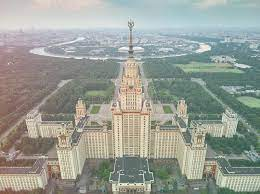





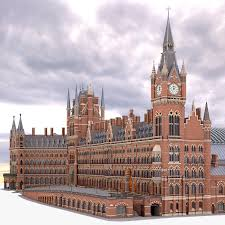
















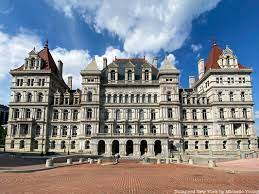







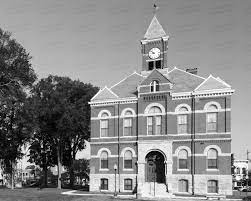







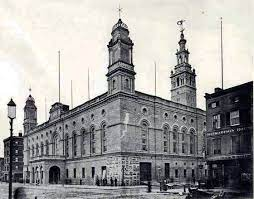






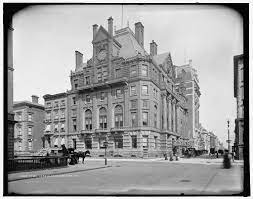







No comments:
Post a Comment